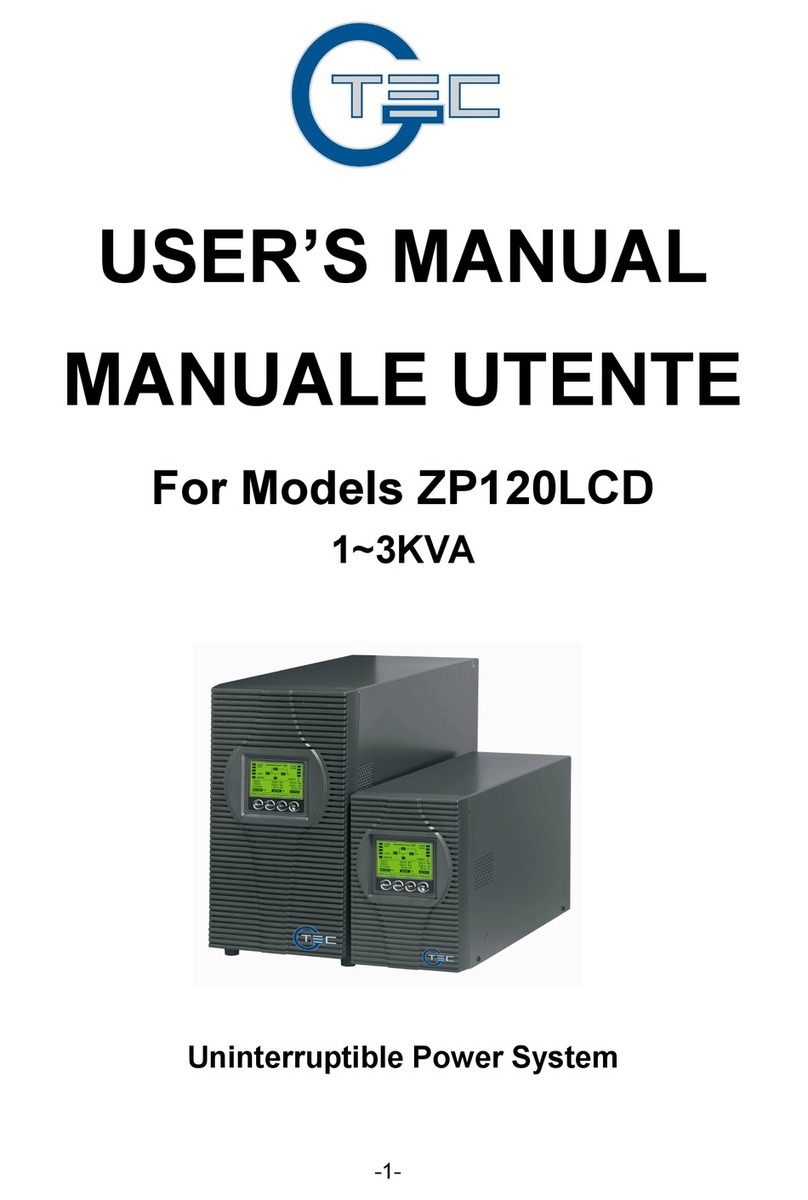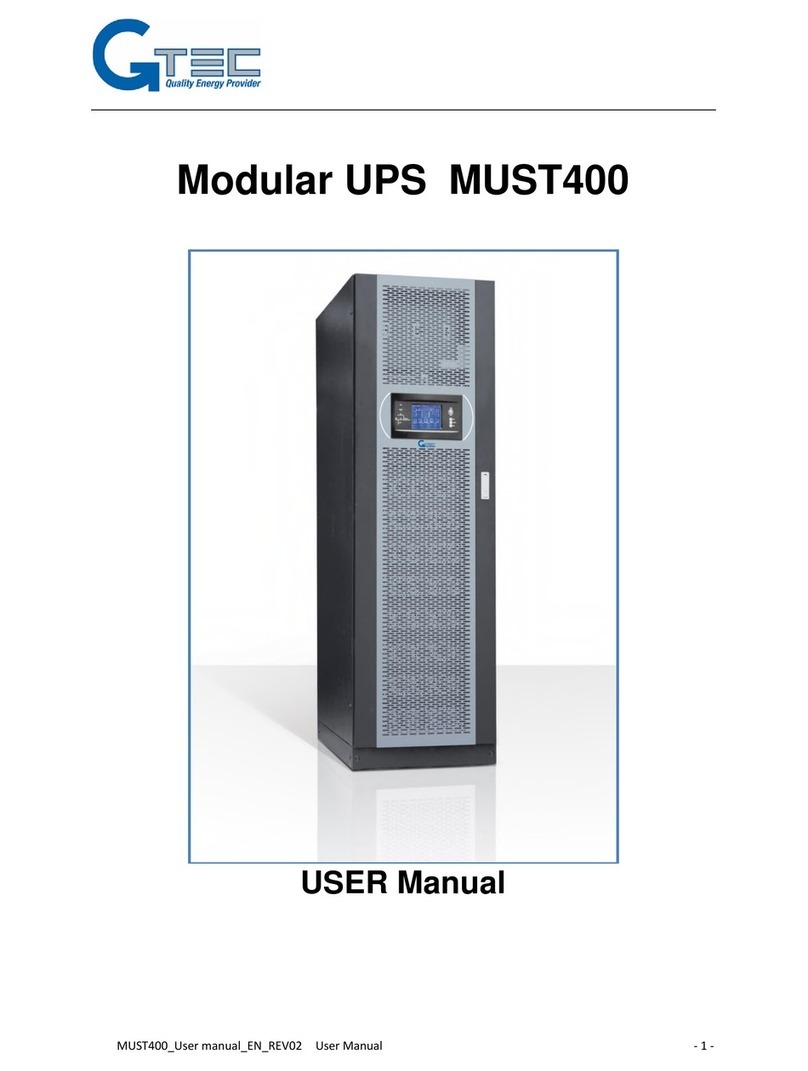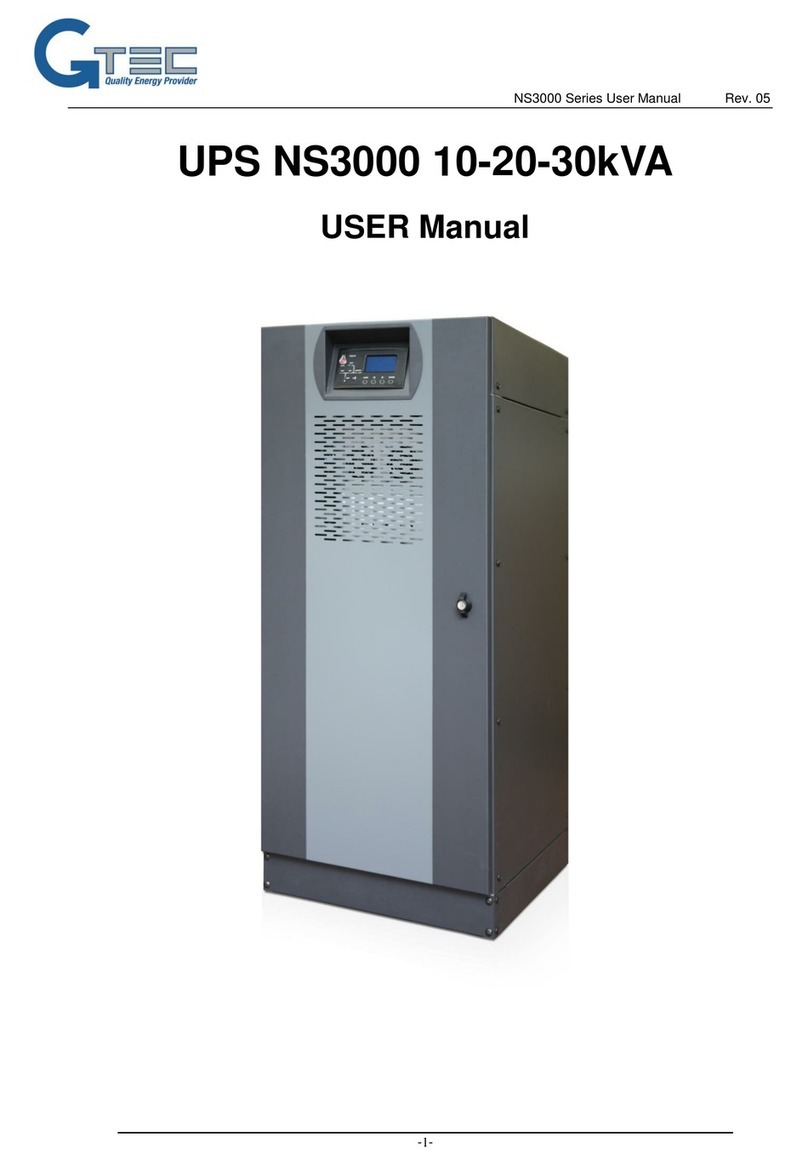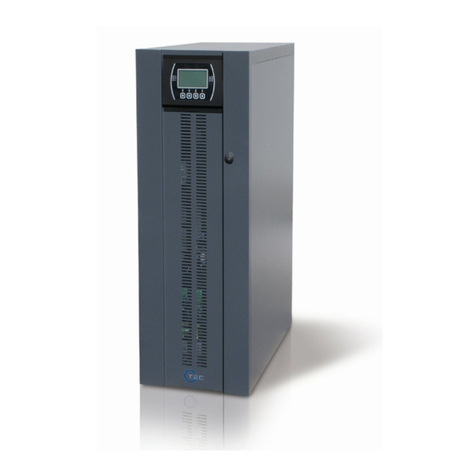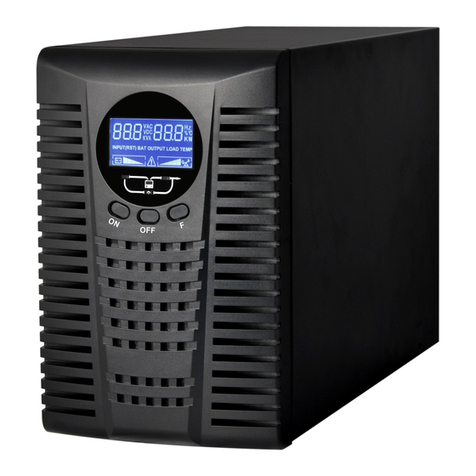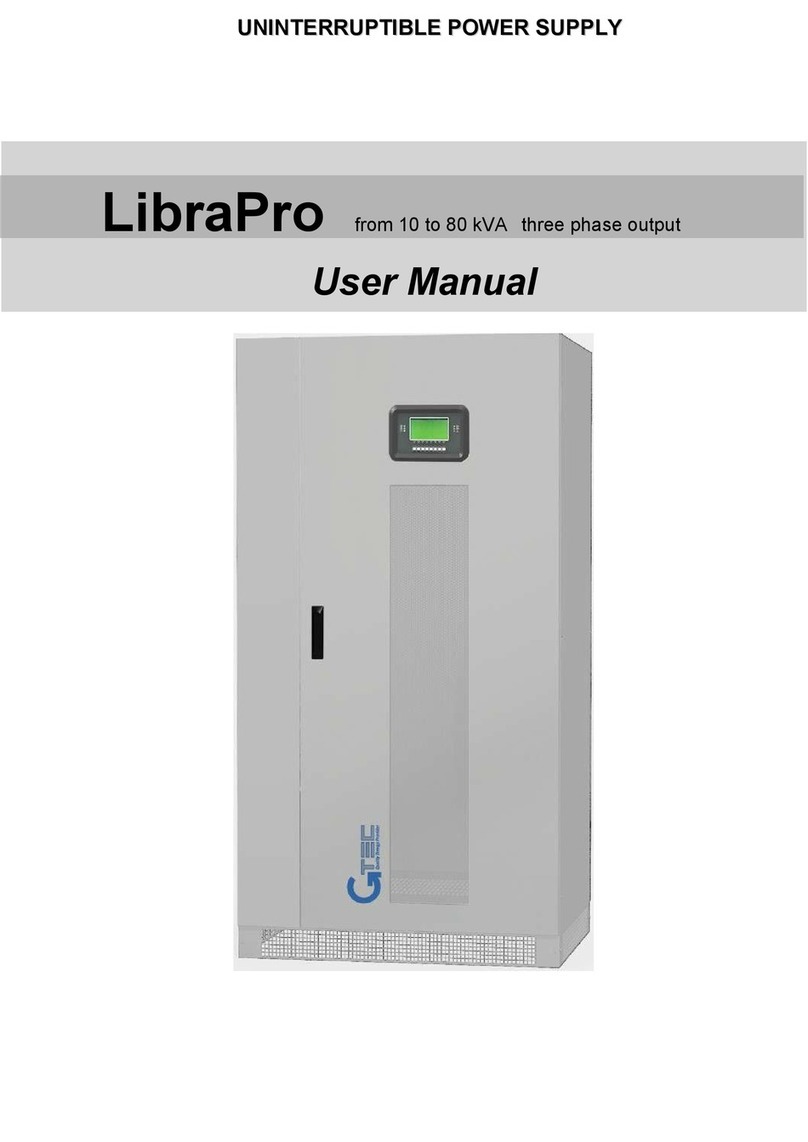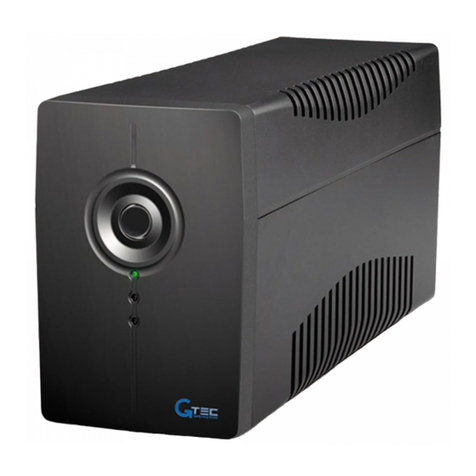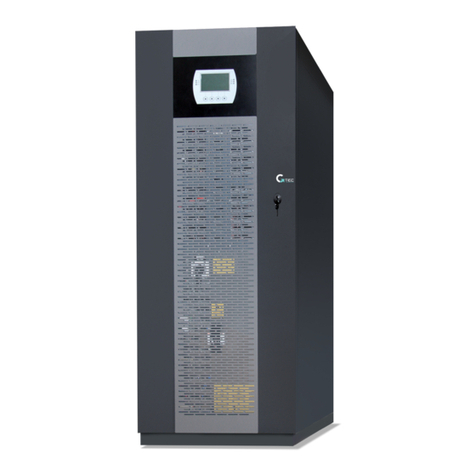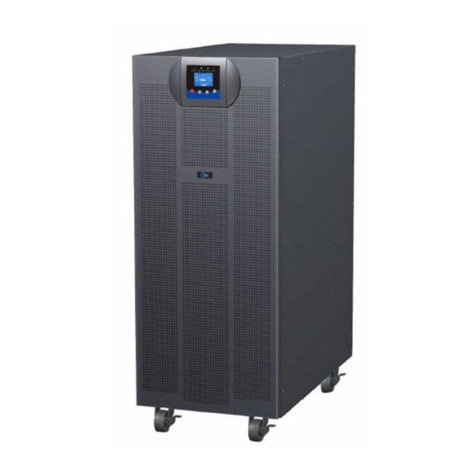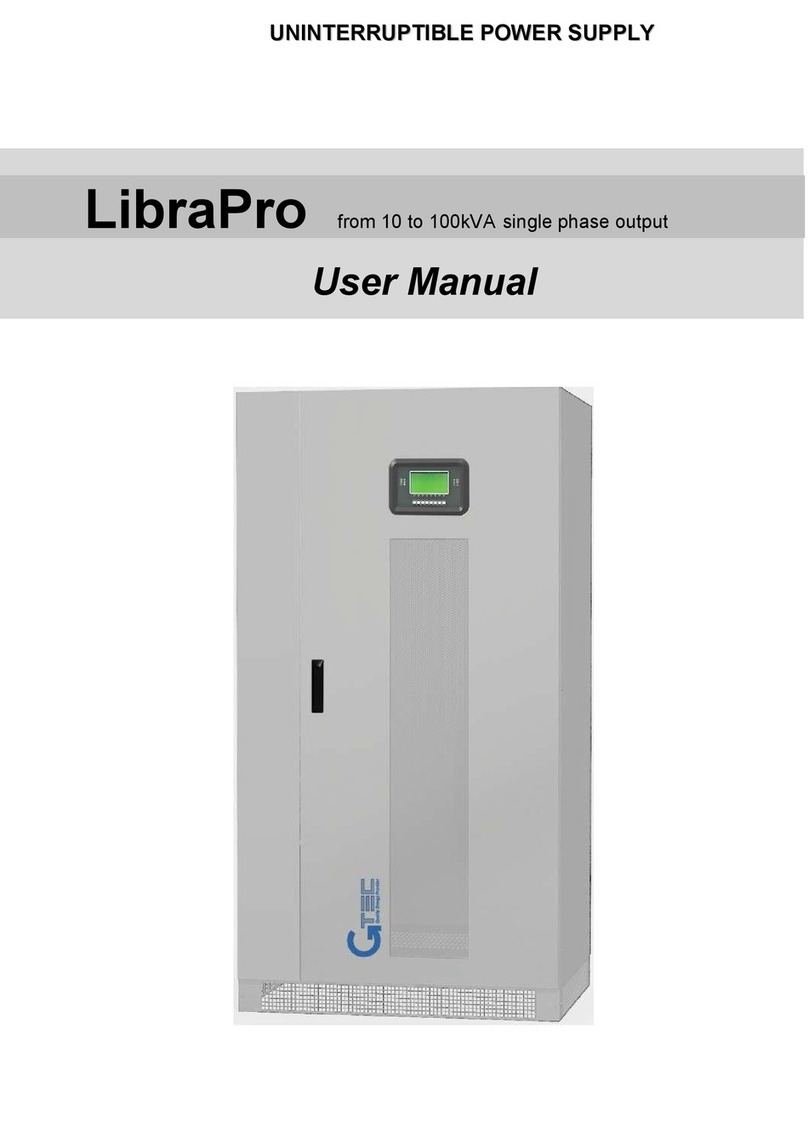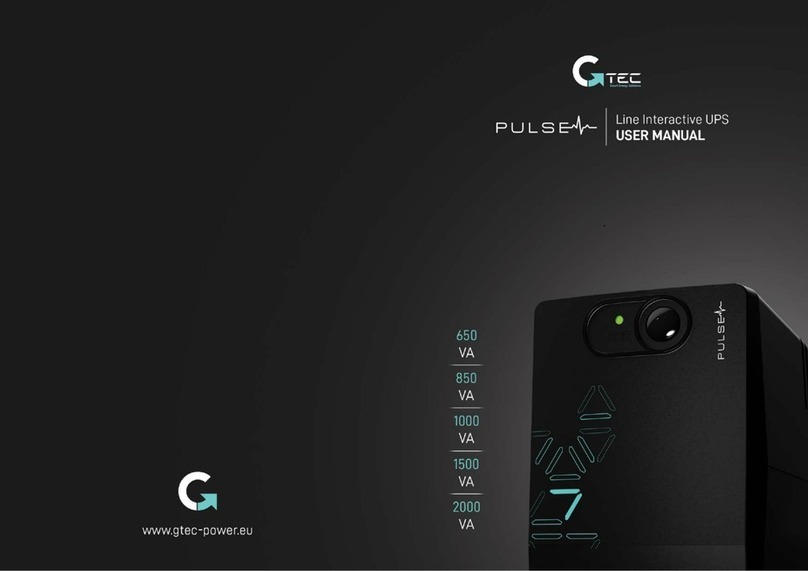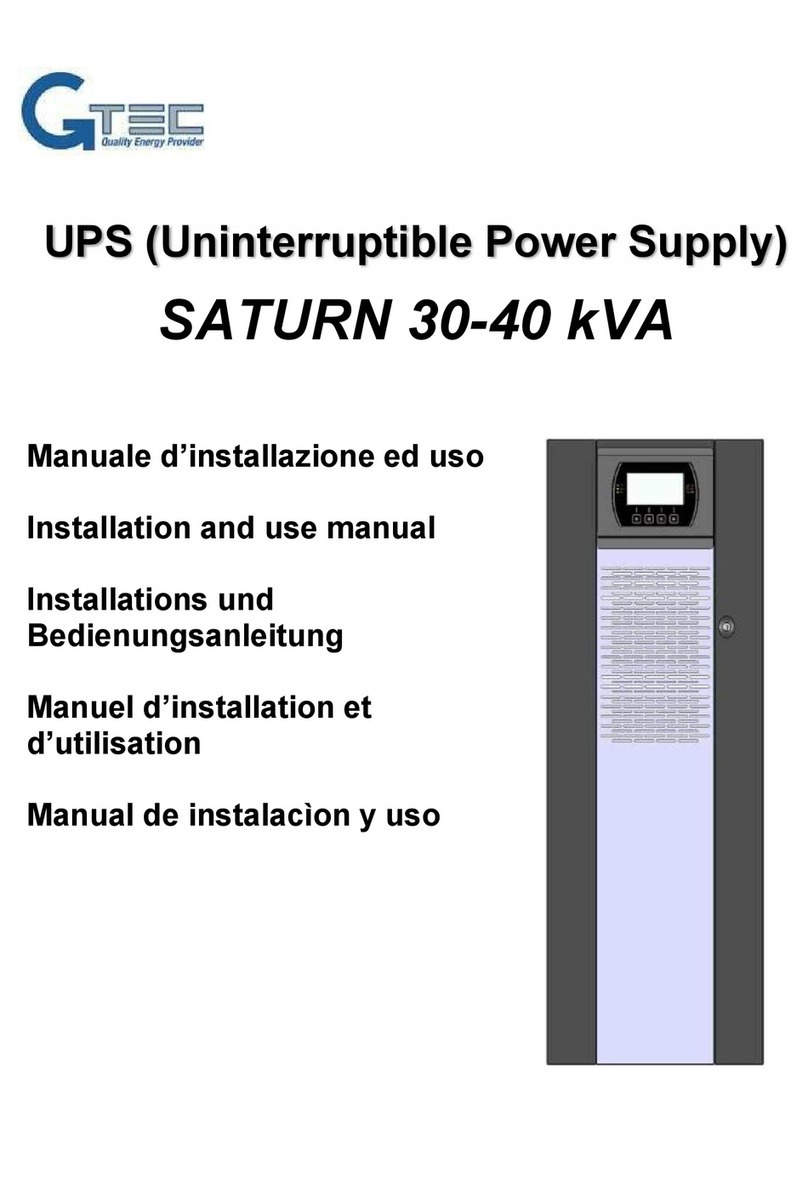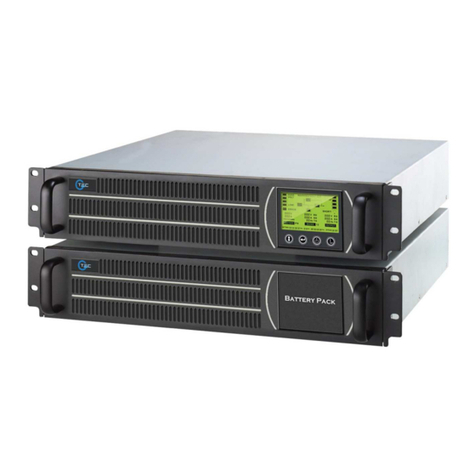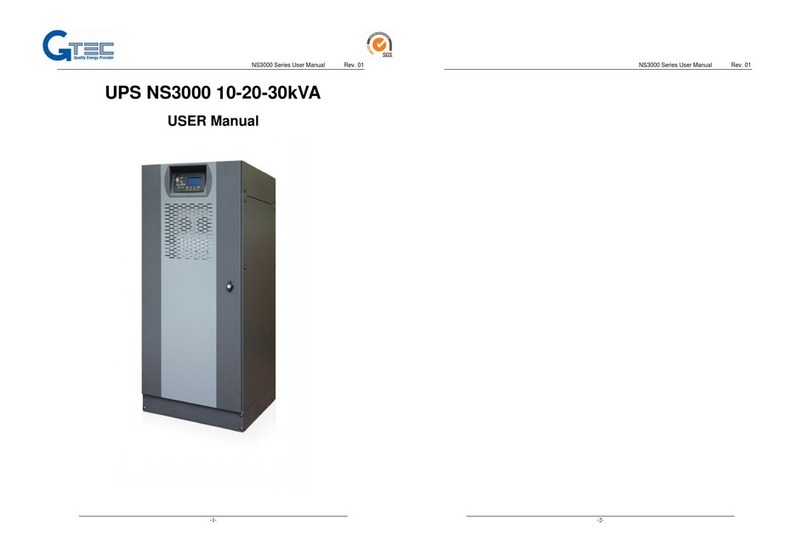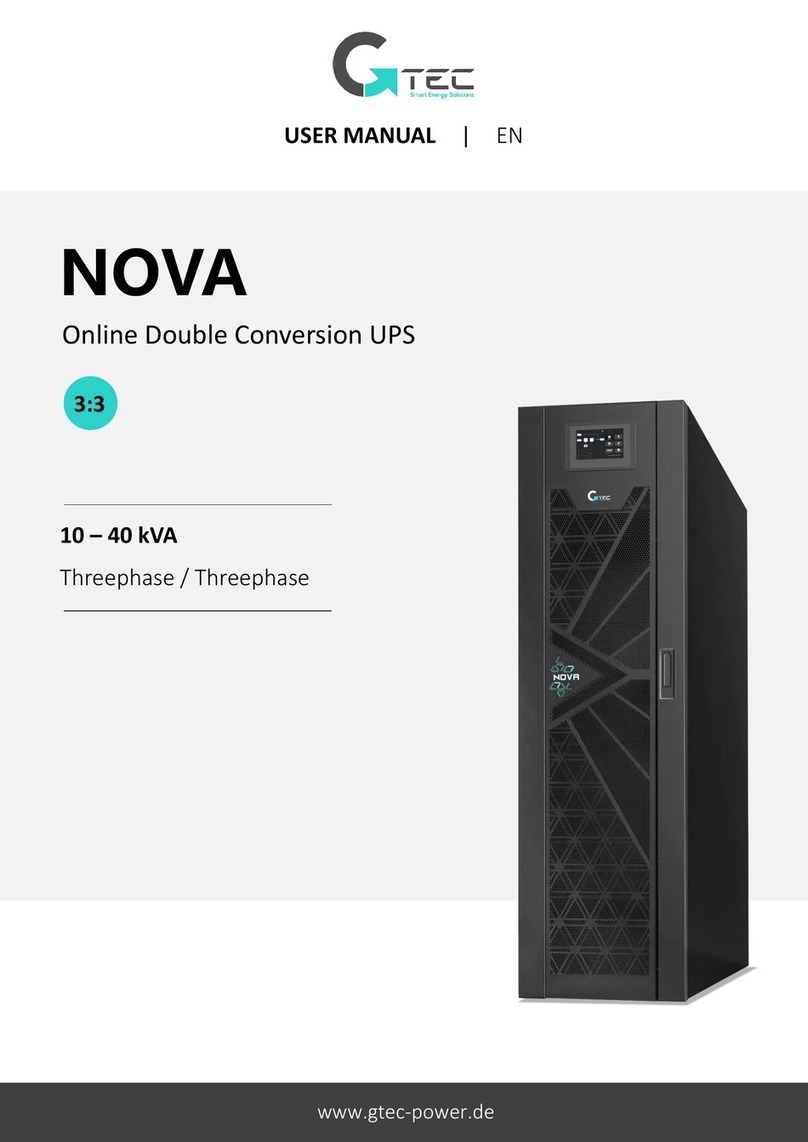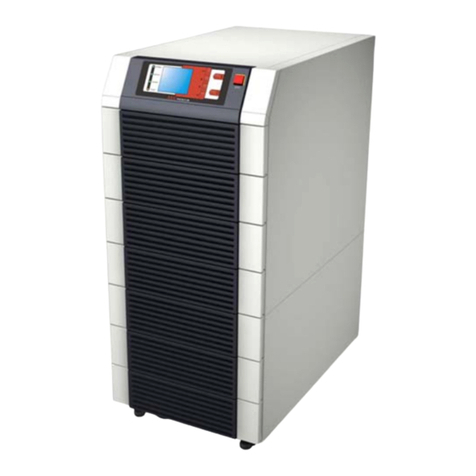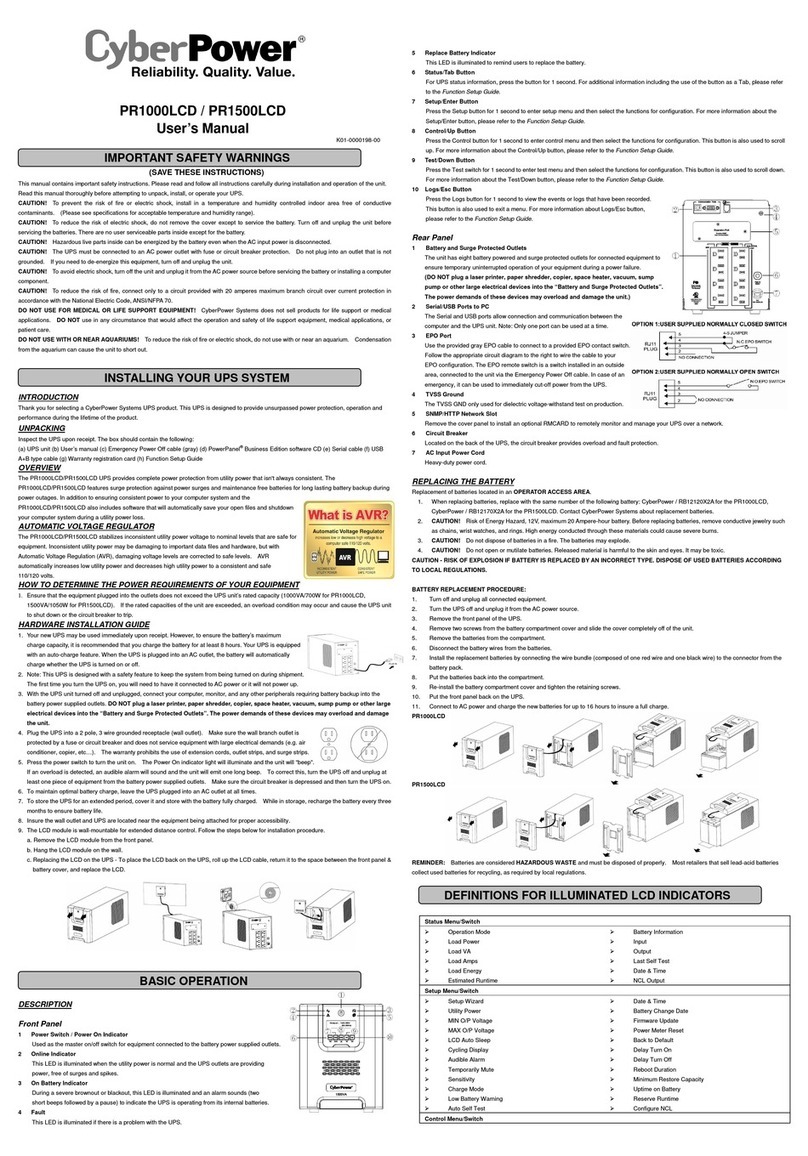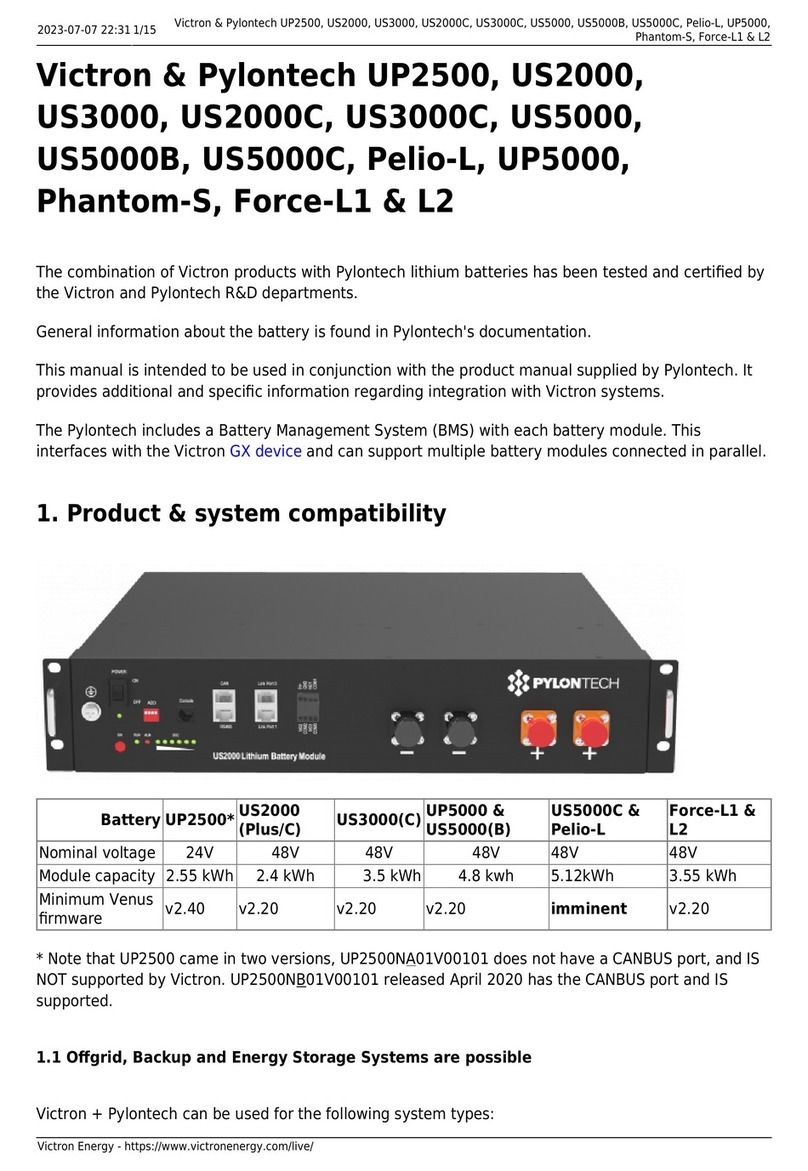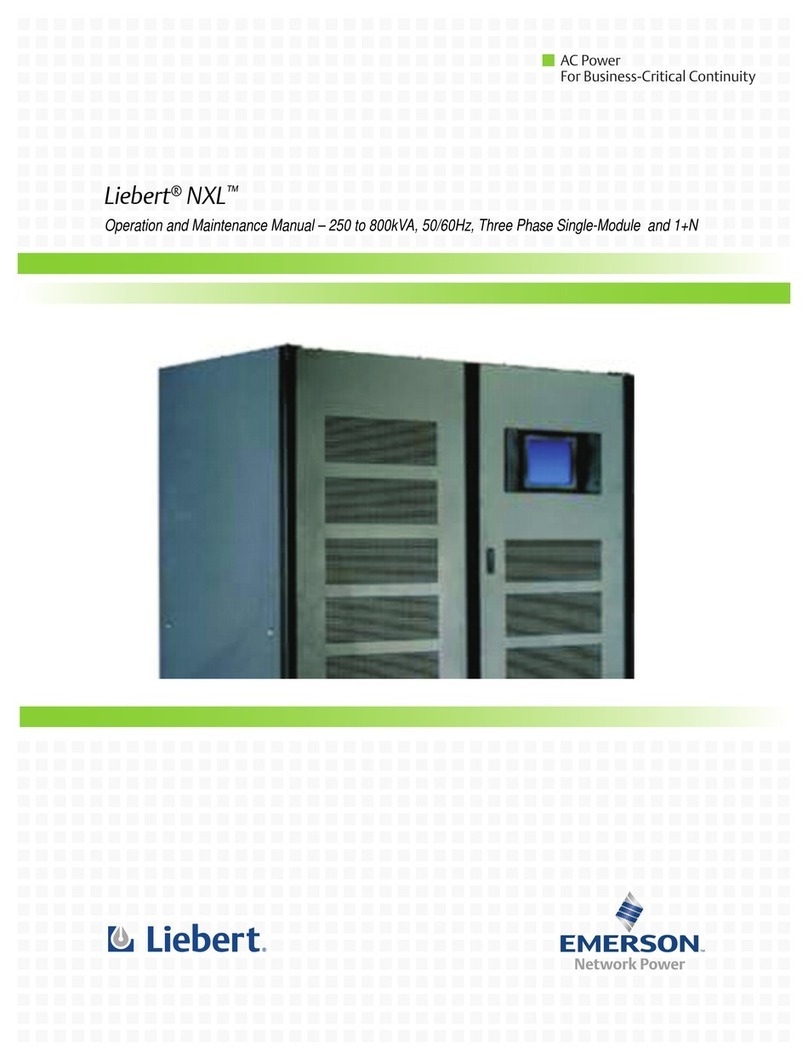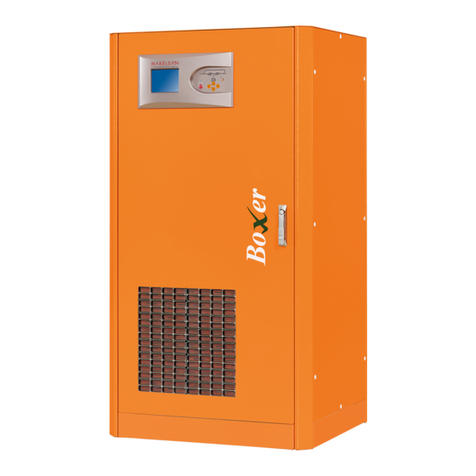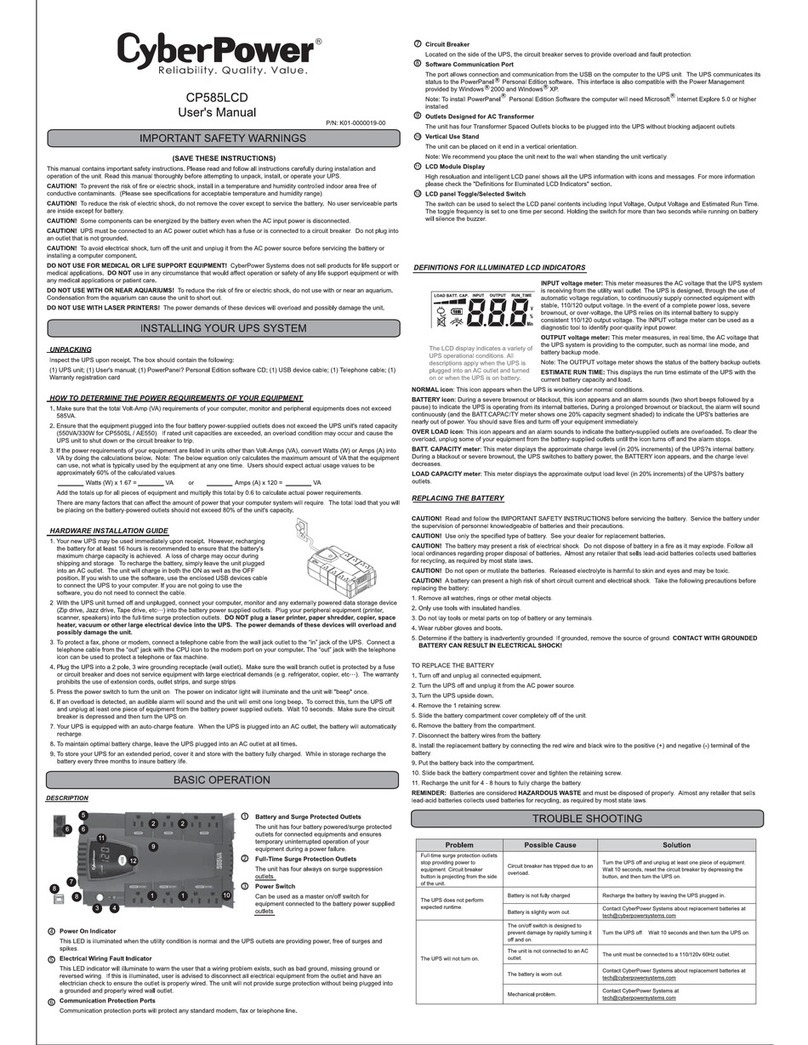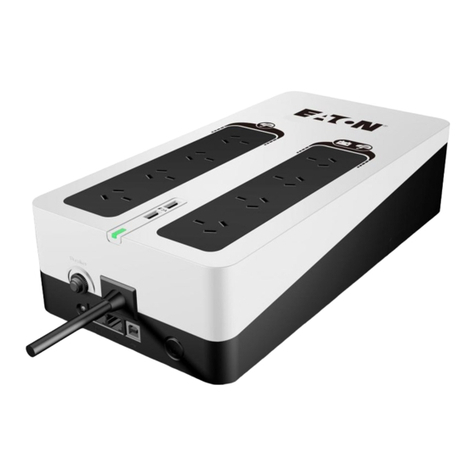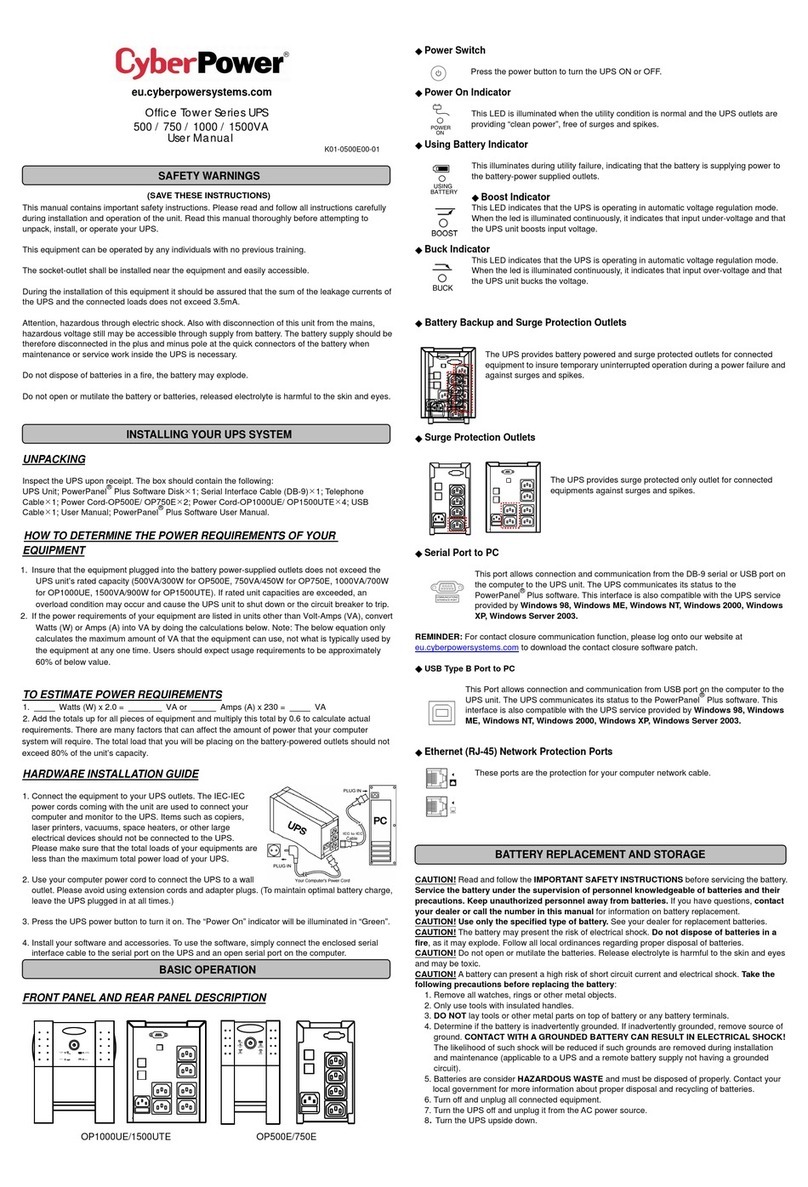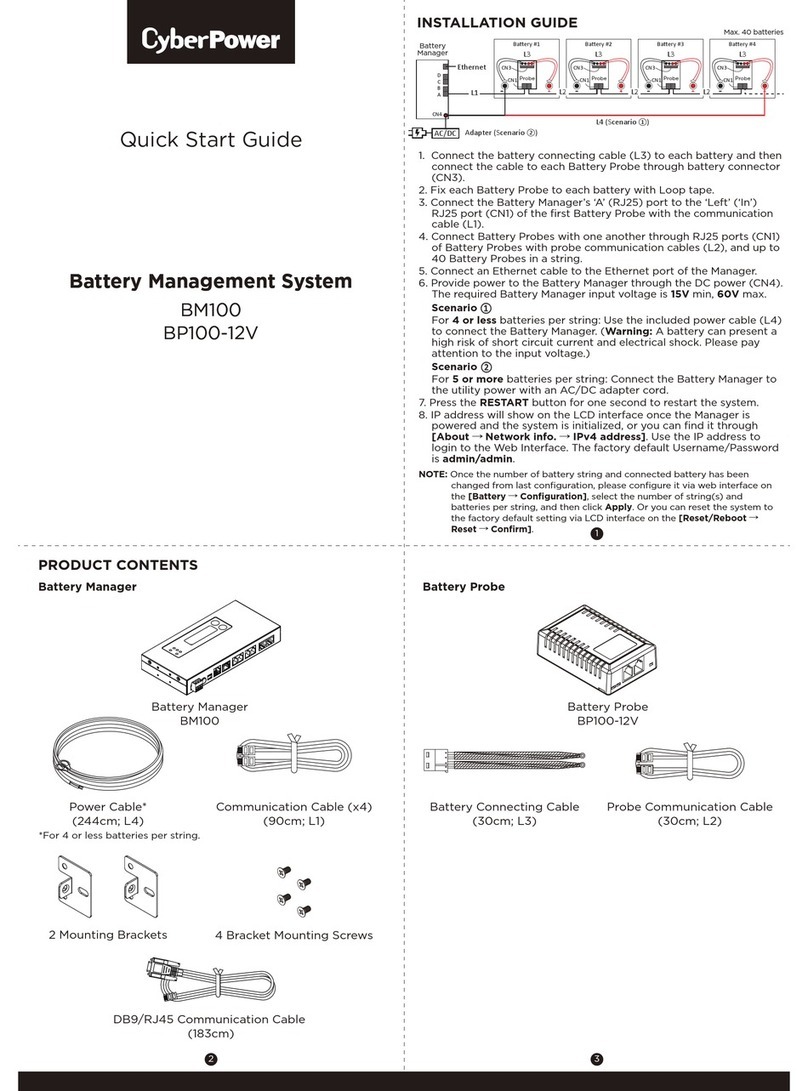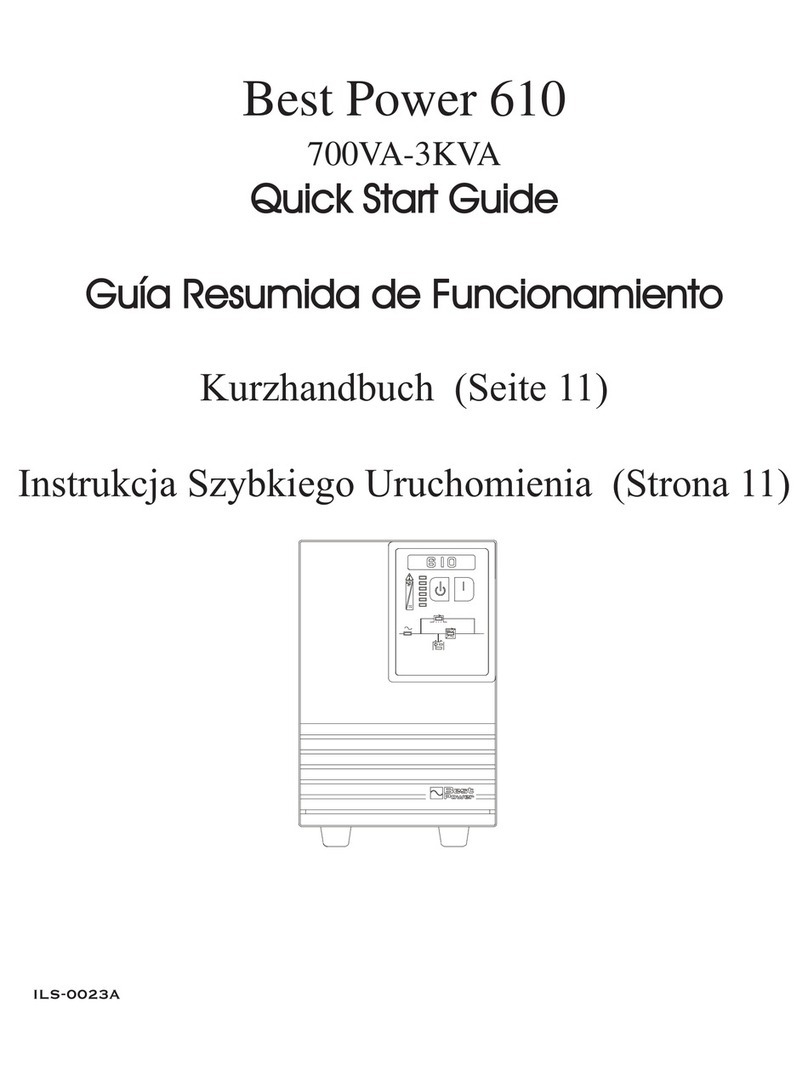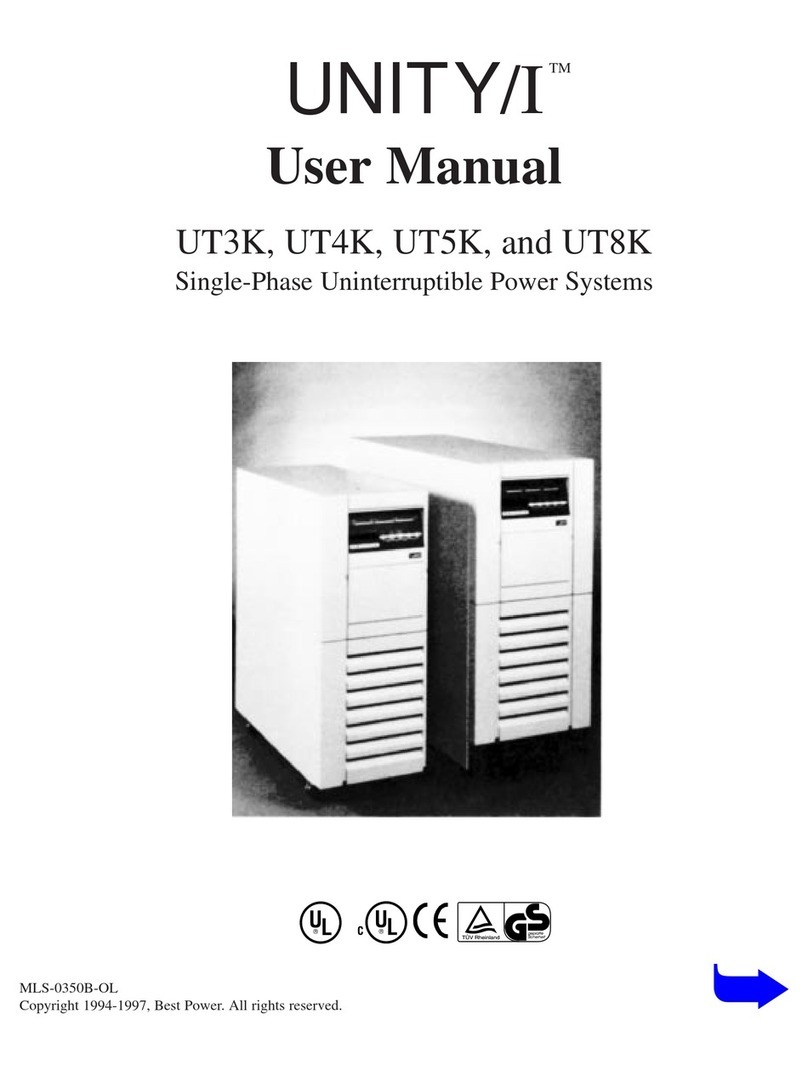
Quick start_MUST400T_ENG_REV00 5
The Modular series UPS uses forced convection cooling by internal fans. Cooling air enters the module
through ventilation grills located at the front part of the cabinet and exhausted through grills located in the rear
part of the cabinet. Please do not block the ventilation holes.
If necessary, an extractor fans system should be installed to aid cooling-air flow.
An air filter should be used when the UPS is to operate in a dirty environment and should be regularly
cleaned to maintain proper airflow.
The cooling capacity of air conditioner should be selected according to the power loss data of UPS specified
in Table.9-8: Normal mode (VFI SS 111 double-conversion UPS)
Note 1 : The UPS should be installed on a concrete surface or other surface that is not combustible.
Note 2 : Ensure that the capacity of the floor is greater than the weight of the UPS and battery cabinet (if
present), and verify that the floor is flat.
1.3.2 External Battery Room
The battery will generate some amount of hydrogen and oxygen at the end of charging, so the fresh air
volume of the battery installation environment must meet EN50272-2001 requirements.
The environmental temperature of the battery must be stable. Ambient temperature is a major factor in
determining the battery capacity and lifetime.
The rated operating temperature of battery is 20°C. Operating above this temperature will reduce the battery
life, and operation below this temperature will reduce the battery capacity. If the average operating
temperature of battery is increased from 20ºC to 30ºC, then the service life of the battery will be reduced by
50%. If the operating temperature of the battery is above 40ºC, then the battery service life will decrease in
exponential rate.
In a normal installation, the battery temperature is maintained between 15°C and 25°C. Keep batteries away
from heat sources or air outlets.
If external batteries are used, the battery circuit breakers (or fuses) must be mounted as close as possible to
the batteries, and the connecting cables should be as short as possible.
(*): The standard EN 50272-2 for air change envisages that the minimum opening must satisfy the following equation:
A = 28 x Q = 28 x 0.05 x n x Igas x C10 (1/10³) [cm²]
where: A = free opening for air intake and outlet
Q = flow of air to be removed [m³/h]
n = number of battery elements;
C10 = battery capacity over 10 hours [Ah]
Igas = current that produces gas [mA//Ah]
in accordance with the standard: Igas = 1 VRLA type battery
When the equation is applied for 240 element (40 battery) hermetically-sealed lead batteries:
A = 336 x C10 / 10³ [cm²]
When using 120Ah batteries, the minimum aperture should be approximately:
A = 41 [cm²]
1.3.3 Storage
If the equipment is not installed immediately, it must be stored in a room protected against excessive humidity
and heat sources (see Table.9-2).
The battery needs to be stored in dry and cool place with good ventilation.
The most suitable storage temperature is from 20 ºC to 25ºC.
Preventing battery slow discharge
